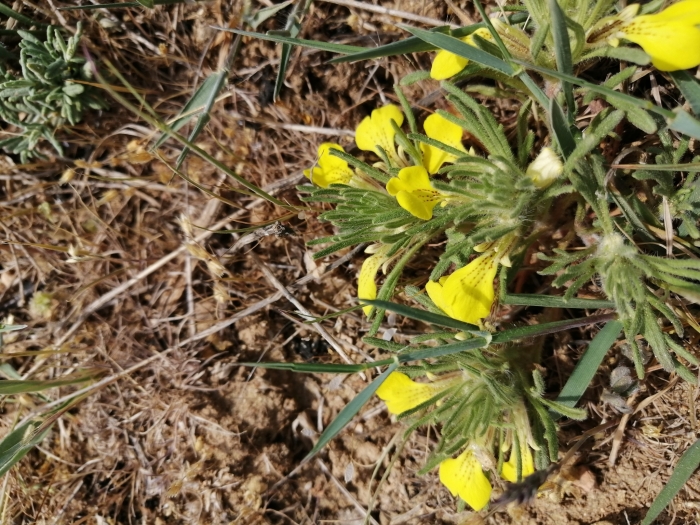Yellow Bugle
(Ajuga chamaepitys)
Yellow Bugle (Ajuga chamaepitys)
/
/

Roman I. Konst.
CC BY 4.0
Image By:
Roman I. Konst.
Recorded By:
Copyright:
CC BY 4.0
Copyright Notice:
Photo by: Roman I. Konst. | License Type: CC BY 4.0 | License URL: http://creativecommons.org/licenses/by/4.0/ | Rights Holder: Roman I. Konst. | Publisher: iNaturalist | Date Created: 2024-04-16T13:55:19-07:00 |
























Estimated Native Range
Summary
Ajuga chamaepitys, commonly known as Yellow Bugle or Ground-pine, is a small herbaceous perennial native to open woodlands, grasslands, and scrub areas in Europe and North Africa. It typically grows 4 to 16 inches tall and is characterized by its whorled leaves that resemble tiny pine trees, hence the name Ground-pine. The plant produces bright yellow, two-lipped flowers in late spring, which are quite showy and attract pollinators. It is well-suited to rock gardens and can be used as a ground cover due to its low-growing habit.
Yellow Bugle thrives in dry, well-drained soils and requires full sun to partial shade. It is valued for its medicinal properties, including stimulant, diuretic, and emmenagogue effects, and has been traditionally used to treat gout, rheumatism, and female disorders. In the Levant, it is utilized as an analgesic. While it is not commonly used in culinary applications, its aromatic foliage can be interesting in sensory gardens. Gardeners should note that Ajuga chamaepitys can be sensitive to overwatering and may suffer from root rot if drainage is poor. It is generally low-maintenance, but it can spread rapidly and may need to be controlled in small garden spaces.CC BY-SA 4.0
Yellow Bugle thrives in dry, well-drained soils and requires full sun to partial shade. It is valued for its medicinal properties, including stimulant, diuretic, and emmenagogue effects, and has been traditionally used to treat gout, rheumatism, and female disorders. In the Levant, it is utilized as an analgesic. While it is not commonly used in culinary applications, its aromatic foliage can be interesting in sensory gardens. Gardeners should note that Ajuga chamaepitys can be sensitive to overwatering and may suffer from root rot if drainage is poor. It is generally low-maintenance, but it can spread rapidly and may need to be controlled in small garden spaces.CC BY-SA 4.0
Plant Description
- Plant Type: Herb
- Height: 0.5-1 feet
- Width: 0.5-1 feet
- Growth Rate: Moderate
- Flower Color: Yellow
- Flowering Season: Spring, Summer
- Leaf Retention: Evergreen, Semi-deciduous
Growth Requirements
- Sun: Full Sun, Part Shade
- Water: Low, Medium
- Drainage: Fast, Medium
Common Uses
Bee Garden, Butterfly Garden, Deer Resistant, Drought Tolerant, Low Maintenance, Rock Garden
Natural Habitat
native to open woodlands, grasslands, and scrub areas in Europe and North Africa
Other Names
Common Names: Yellow Ground Pine, Ajuga, Ground-Pine
Scientific Names: , Ajuga chamaepitys, Ajuga chamaepitys, Ajuga rechingerae, Bugula arvensis, Bugula chamaepithys, Bulga chamaepitys, Chamaepitys vulgaris, Teucrium chamaepitys,
GBIF Accepted Name: